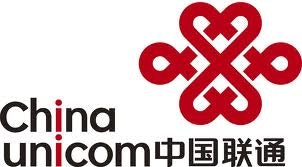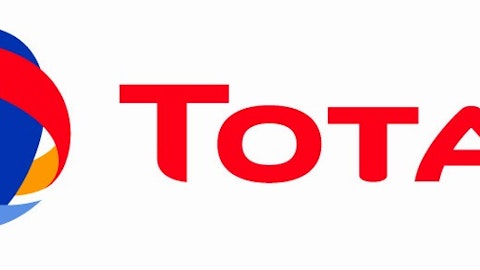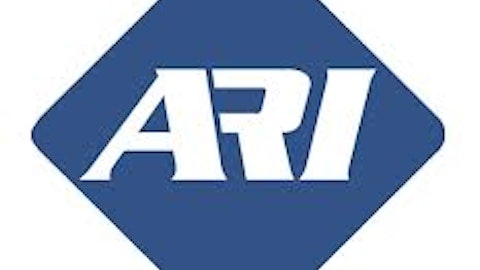 Six years ago, the markets could not get enough China. The iShares FTSE/Xinhua China 25 Index (ETF) (NYSEARCA:FXI) quadrupled in just three years, and shares of PetroChina Company Limited (ADR) (NYSE:PTR) had surged 1,175% in the seven years before October 2007.
Six years ago, the markets could not get enough China. The iShares FTSE/Xinhua China 25 Index (ETF) (NYSEARCA:FXI) quadrupled in just three years, and shares of PetroChina Company Limited (ADR) (NYSE:PTR) had surged 1,175% in the seven years before October 2007.
Though most of the hard-landing crowd has been discounted, sentiment has clearly turned against the world’s second-largest economy. Shares of the largest China fund are down 12% over the past four years and have underperformed the S&P 500 index by 77% over that period.
But those focusing on the short-term economic weakness, a result of overcapacity and the government’s attempt to reposition economic drivers, are missing a very important figure that will drive real long-term growth.
$8.1 trillion.
That is the amount of investment needed over the next six years to meet urbanization needs in the country and to support more than 300 million people that will be moving from rural areas, according to the China Development Bank. That is nearly equal to the population of the United States — and all those people need housing, utilities and a transportation network.
Currently, just 52% of China’s population lives in cities. That number is expected to increase to 60% by 2020. Double-digit growth has slowed but the world’s second-largest economy still has a long way to go. To put this into perspective, the United States had a comparable urbanization level in 1920 but didn’t reach 60% for more than 20 years. China is on pace to do it in less than a third the time.
Eight trillion dollars over just six years is a huge growth driver, a stimulus package almost 14 times larger than the efforts used to move the U.S. economy out of recession in 2009. That stimulus package helped the China Large Cap fund return 80% in the year after the 2008 announcement.
The reform of economic drivers means that not all Chinese shares will benefit, but investors should do well with a mix of communications, transportation and utility companies. As a bonus, I’ve included a pollution control company that has already booked some major contracts in China. Last spring brought a historic crisis of pollution to the major cities, and the urbanization of 300 million more people will only drive revenue higher for companies like the last company mentioned below.

Communications
China Unicom (Hong Kong) Limited (ADR) (NYSE:CHU) is the third-largest telecom company in China at $35.8 billion. Total revenue jumped 19% in the first half of 2013, to $23.1 billion, as subscribers upgraded to 3G services. The company has consistently gained market share from a larger rival, China Mobile Ltd. (ADR) (NYSE:CHL), by focusing on lower-priced phones while offering comparable services. Investors have been worried about expenses as selling and marketing costs increased 25% over the comparable period last year to $3.3 billion. Shares have been under pressure for the shrinking margins, but this could present a great time to buy for new investors. The faster increase in marketing expenses now may lead to higher future revenue against slower growth in expenses, boosting top- and bottom-line growth.
Transportation
The only Chinese railroad traded on the U.S. market, Guangshen Railway Co. Ltd (ADR) (NYSE:GSH) is my favorite of the group. More than 50% of the country’s trade is transported by rail, more than any other developed nation, and the industry carries more than three times the passengers and freight than carried in the United States. More than 240 million people traveled by train during the 40 days of this year’s Chinese New Year celebrations. More people moving to the cities will mean more trips by rail to visit family in rural areas.
Shares of GSH do not have the volume of other picks but trade for just 0.8 times book value and pay a 2.4% dividend yield. Revenue is expected to rise 10% this year on smaller government programs, but the company is the best positioned to take advantage of the shift in urbanization and growth in infrastructure needs.
Utilities
With a market cap of $13.9 billion, Huaneng Power International Inc (ADR) (NYSE:HNP) is China’s largest provider of electricity. The economic slowdown has hit the company with revenue increasing just 1.4% in 2012 to $21.5 billion, but the drop in coal prices helped the company decrease cost of revenue by more than 8% and boosted its gross margin by a third to 31%. The shares trade cheaply at just 9.7 times earnings despite a strong 3% yield. The recent drop of 20% in the share price offers long-term investors a more reasonable entry point.
Beyond the long-term potential providing electricity to a rising urban population, I think Huaneng Power International Inc (ADR) (NYSE:HNP) will eventually unlock some serious shareholder value through asset sales. Though electricity production accounts for 98% of the company’s revenue, Huaneng Power International Inc (ADR) (NYSE:HNP) is also involved in a mix of other segments, including cargo transportation, port management and warehousing services, machinery leasing, and industrial waste management. However, the company lost $8.2 million on revenue of $98 million among those segments in 2012. A sale of these assets to a company that can more efficiently manage them could mean cash to shareholders — and a more efficient business model.
Pollution Control
Fuel Tech Inc. (NASDAQ:FTEK) recently reported $5.7 million in new contracts from an existing client and three new Chinese customers for optimization systems and emission control of coal-fired plants. The $89 million Illinois-based company provides pollution control systems to customers worldwide. Revenue has grown by 10% a year since 2009 to $97.6 million last year. Shares are down almost 90% since the 2007 high but have settled at $4 a share to trade at book value. This is a company with high upside on a return of investor sentiment or a strategic event like a merger or acquisition.
Risks to Consider: The stocks are bound to be volatile over the next year as investors weigh the extent of the slowdown in China. Investors need to be able to wait for this massive long-term growth driver to send shares higher.
Action to Take –> Even if the full $8.1 trillion of required investment is not realized, the recent sell-off presents a great long-term opportunity for investors to get back into select Chinese companies.
P.S. — Investors should expect to hold these stocks for several years before the effects of the recommended $8.1 trillion in spending begin to materialize. If you prefer to hold stocks for several years or longer, you may be interested in what we call “Forever Stocks” — stocks solid enough to buy, forget about and hold “Forever.” To learn more about these stocks — including some of their names and ticker symbols — click here.
– Joseph Hogue
Warren Buffett’s Top 5 Stocks
Buffett’s firm, Berkshire Hathaway, holds dozens of stocks. But these five make up 75% of its portfolio… worth $65 billion. Click here to get Buffett’s top 5 stocks plus his 16 latest buys, FREE.





